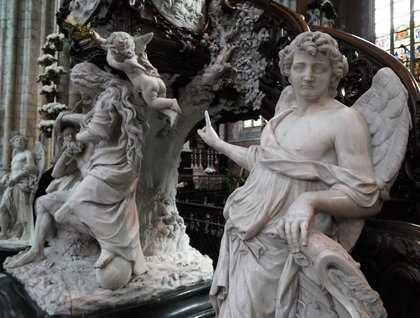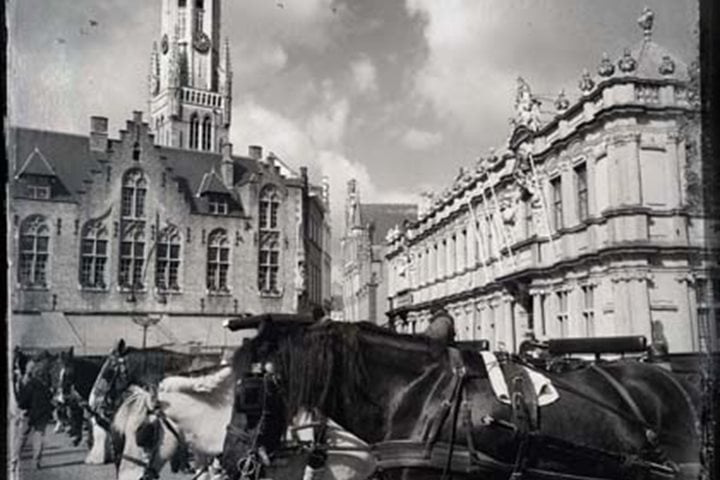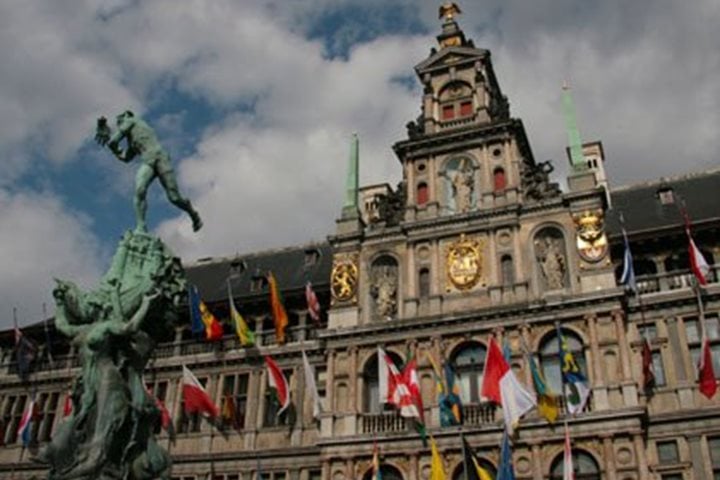It was 8 a.m. A cool breeze slightly ruffled the feathers of a grey heron as it slowly flew above the silt-laden water. It landed, emitted a guttural croak and settled itself among the reeds growing along the bank. The National Geographic Explorer was making her way towards the Ghent-Terneuzen canal. As we have come to appreciate over the last couple of days on this eye-widening journey, the city of Ghent, like so many others along the coastal fringes of Western Europe, is still very much a water-based settlement. Initially rivers traversing this region were used as natural conduits which allowed access, connection, commerce, diffusion. In Medieval times these were extended by the construction of elaborate, inter-connected canal systems, which saw the city develop into a thriving commercial hub.
Following a leisurely breakfast we took to the water on our Zodiacs and in the company of local guides made our way through the labyrinthine canal network to the centre of Ghent. On our way there a plethora of warehouses, cranes, bridges, and medieval buildings were highlighted and expounded on;a veritable mobile presentation on the rich built and cultural heritage of this ancient settlement. Upon landing we were escorted to the Belga Queen restaurant, a remarkably well preserved 13th-century granary. This has been sensitively modernised and the wonderful ambiance of this centuries old building was matched by the top quality of the multi-course lunch.
The afternoon was spent in the company of our local guides exploring what had been the Medieval core of this city. Here a rich array of interesting ancient buildings includes Gravensteen Castle and St. Baaf's Cathedral. The former was originally constructed in the 12th century. The castle now houses a museum among whose exhibits include weaponry through the ages and instruments of torture. This fortification had been made to impress, to impinge on the memory, and to warn off potential rivals. It remains a most impressive structure.
On entering St. Baaf's one is immediately struck by the scale, grandeur and complexity of the building. The original religious foundation was established in the 10th century. Added to, rebuilt, and extended over the centuries, the cathedral was essentially raised to the greater glory of God, to elevate one's thoughts heavenward and to engage. Fashioned by the consummate skills of a team of craftsmen in the 18th century, its Rococo pulpit is an arresting centrepiece. The highlight of our visit here was the magnificent triptych, The Adoration of the Mystic Lamb. This extraordinary work of art was completed in 1432 and consists of 20-panel alter piece, the work of the famous Van Eyck brothers.








